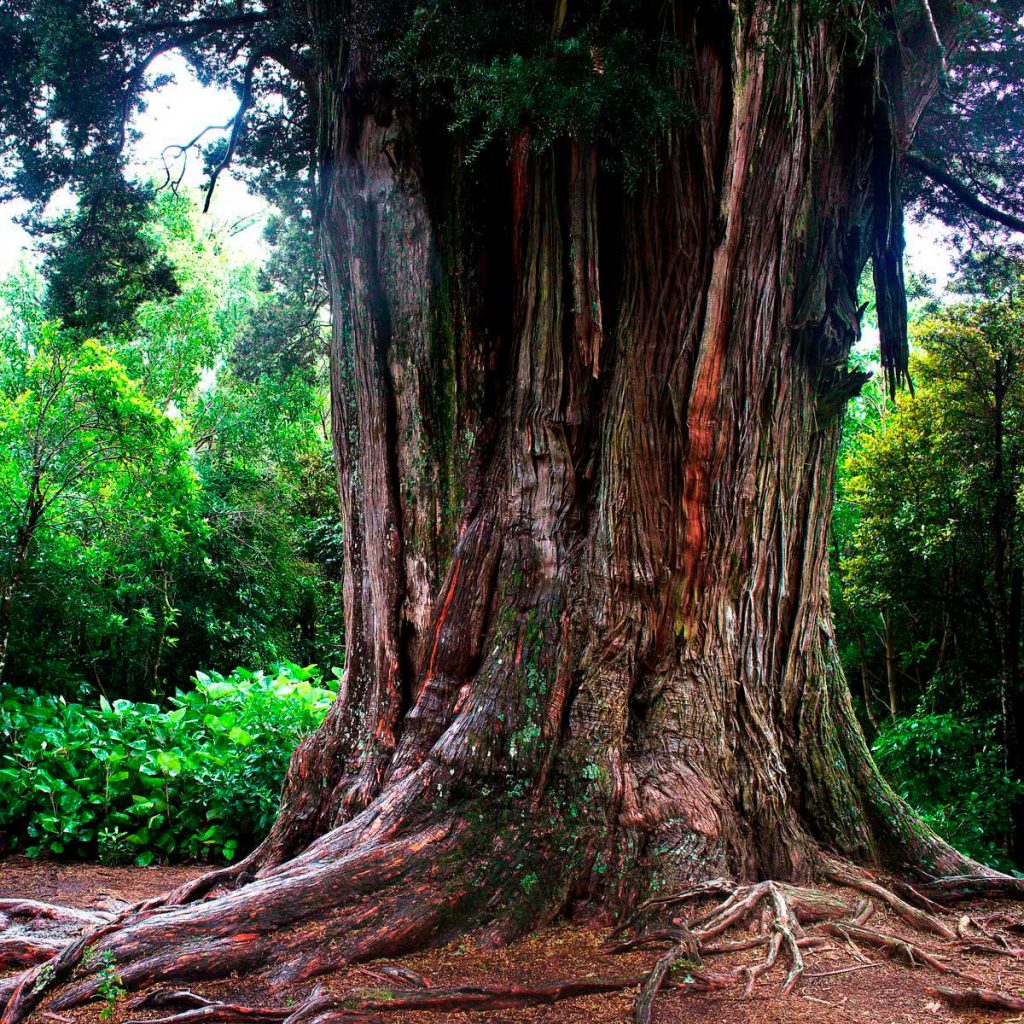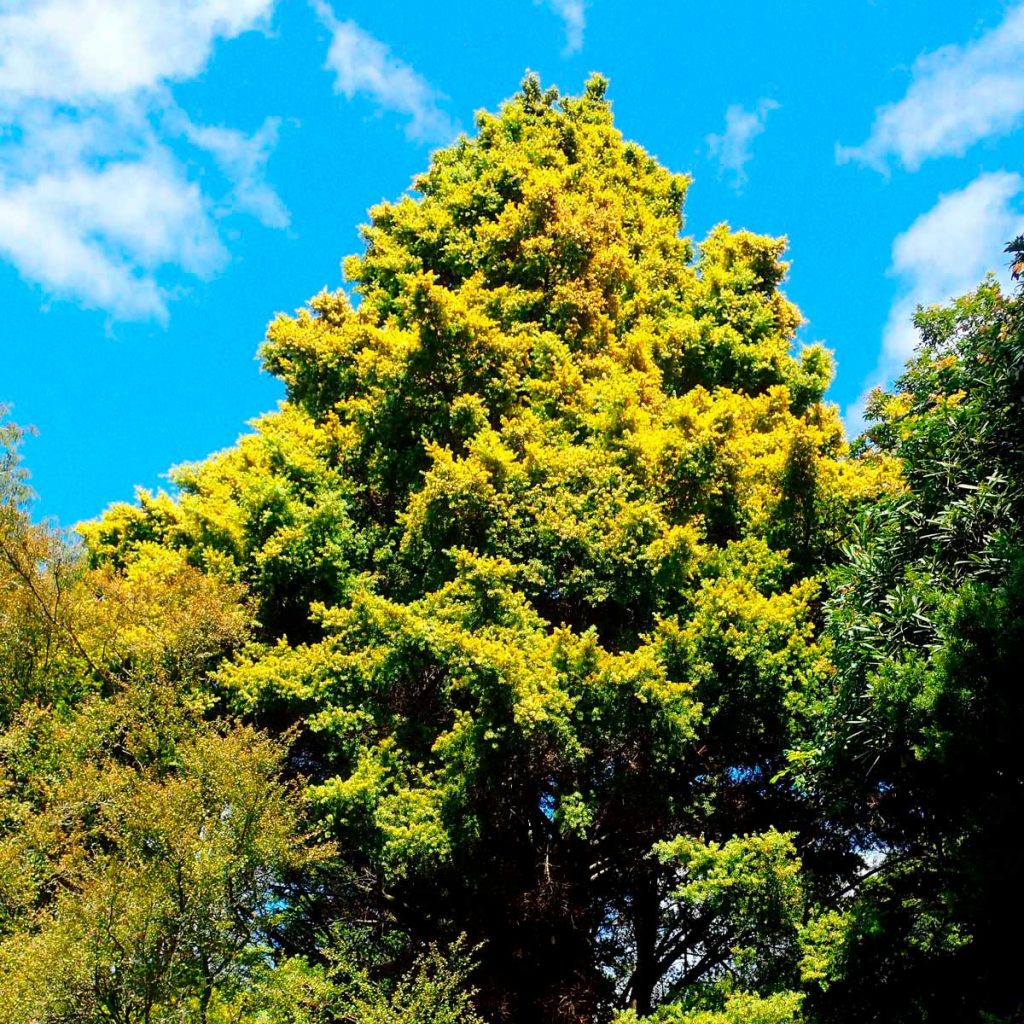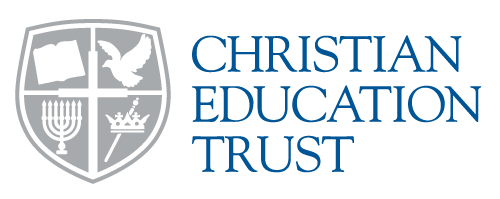
Trees / Totara
Information for Juniors
Totara
- NZ Totaras can live close to 1,000 years
- Mature Totara trees grow to 30m
- The trunks diameter up to 2.5m
- Found throughout the North Island lowlands
- Totaras are slow growing, producing hard timber
Bark & Foliage
- The bark tends to form into long strips, reddish grey and stringy
- The leaves are strong, narrow, waxy, growing to a sharp pointed tip
Flowers and Fruit
- There are male and female trees
- The seeds mature in autumn
- The female produces seed cones
- The cones hold 3 seed pods, which become red flowers in spring
- The Male tree sheds pollen in late spring which pollenate the red flowers
- The seeds are dispersed by birds in their droppings
Interesting Facts
- The wood is hard, straight grained and resistant to rotting
- Used in fence posts, floor pilings and railway sleepers
- The Maori love Totara and prize it for its carving properties and for their Waka
- Totara grows easily from seeds and cuttings
- The trees can survive alone on farms and will not be touched by cattle or sheep who dislike its smell


Information for Junior Secondary
Totara
- The lowland Totara is the largest of all Totara varieties
- It also lasts close to 1,000 years old
- The average size of a mature tree is 25-30m with a diameter of 2-2.5m
- Found throughout NZ mostly in coastal lowland forest areas, predominantly is the volcanic plateau of the North Island
- The seeds are dispersed by birds in their droppings
- Totaras are slow growing, producing hard timber
Bark & Foliage
- The bark tends to form into long strips, reddish grey and stringy
- The leaves are strong, narrow, waxy, growing to a sharp pointed tip
Flowers and Fruit
- There are male and female trees
- The female produces seed cones
- The cones hold 3 seed pods that evolve from large fleshy red berries
- The Male tree sheds pollen in late spring which pollenate the red flowers
- The seeds mature in autumn
Interesting Facts
- The wood is hard, straight grained and resistant to rotting
- Used in fence posts, floor pilings and railway sleepers
- The Maori love Totara and prize it for its carving properties and for their Waka
- Totara grows easily from seeds and cuttings
- The trees can survive alone on farms and will not be touched by cattle or sheep who dislike its smell


Information for Seniors
Totara
- The lowland Totara is the largest of all Totara varieties
- It also lasts the longest and there have been trees in NZ close to 1,000 years old
- The average size of a mature tree is 25-30m with a diameter of 2-2.5m.
- Found throughout NZ mostly in coastal lowland forest areas, predominantly is the volcanic plateau of the North Island
- The seeds are dispersed by birds in their droppings
- Totaras are slow growing , producing hard timber
Bark & Foliage
- The bark tends to form into long strips, reddish grey and stringy
- The leaves are strong, narrow, waxy, growing to a sharp pointed tip
Flowers and Fruit
- There are male and female trees
- The female produces seed cones
- The cones hold 3 seed pods that evolve from large fleshy red berries
- The Male tree sheds pollen in late spring which pollenate the red flowers
- The seeds mature in autumn
Interesting Facts
- The wood is hard, straight grained and resistant to rotting
- Used in fence posts, floor pilings and railway sleepers
- The Maori love Totara and prize it for its carving properties and for their Waka
- Totara grows easily from seeds and cuttings
- The trees can survive alone on farms and will not be touched by cattle or sheep who dislike its smell


Activities
- Find 4 facts describing why the Totara is one of the most sought-after timbers in NZ?
- Write a brief report showing the technology the Maori used for building their canoes from the Totara trees before the white man came.
- Find 4 photos that show the change of the machinery used in felling Totara trees since 1900.
- Draw a Totara leaf alongside a Kauri leaf. (You might like to do a rubbing artwork with 3 different native tree leaves).
